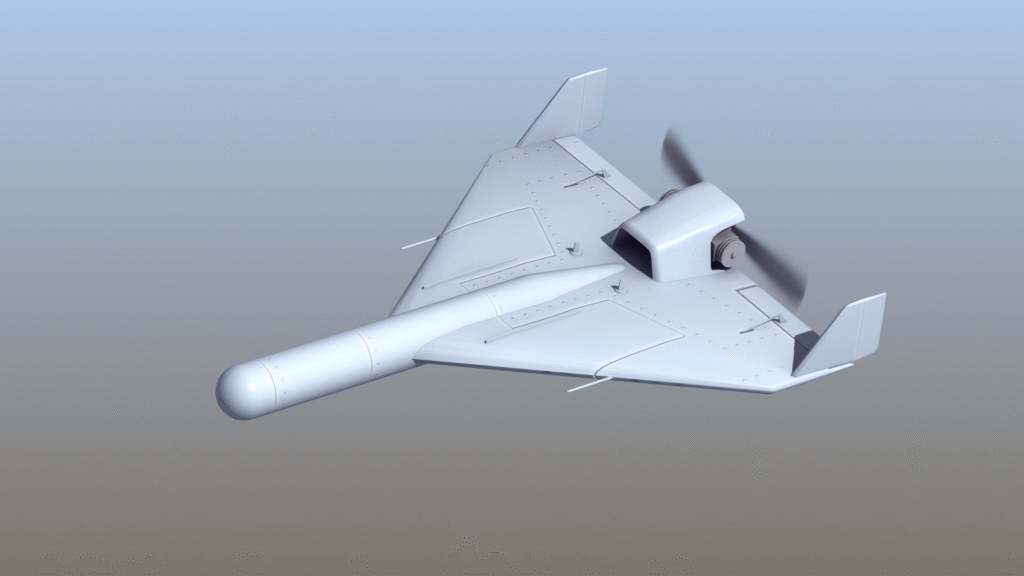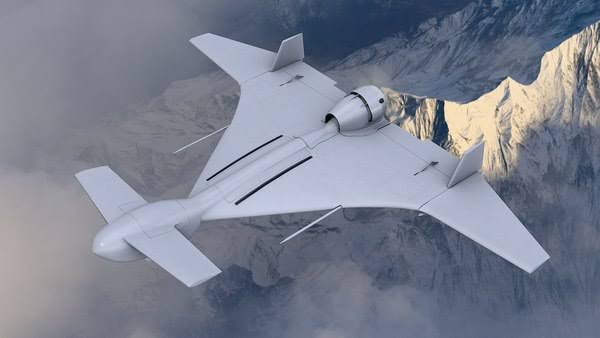
In the early hours of May 2025, tremors were not just felt beneath the ground in Lahore—they reverberated through the very fabric of South Asian geopolitics. According to multiple defense and intelligence reports, Indian Armed Forces deployed advanced loitering munitions—Harpy drones—to strike Pakistan’s air defense systems situated in and around Lahore. While the Pakistani government dismissed these claims as exaggerated and released counter-narratives of downed drones, independent satellite imaging and third-party military analysts began to confirm the credibility of India’s technological upper hand.
This moment, while seemingly just another instance in the long-standing tensions between India and Pakistan, marks a profound shift in military doctrine, tactics, and escalation thresholds in the subcontinent. The usage of unmanned systems like the Harpy drone signals the gradual phasing out of conventional dogfighting and the rise of artificial intelligence-driven precision warfare.
What Is a Harpy Drone and Why It Matters
The Harpy is not your standard surveillance drone. Manufactured by Israel Aerospace Industries (IAI), the Harpy is classified as a loitering munition—a hybrid between a drone and a missile. Designed specifically for SEAD (Suppression of Enemy Air Defenses) missions, the drone is deployed with a single directive: to detect radar emissions and destroy them autonomously.
Operating on a fire-and-forget principle, the Harpy drone flies into contested airspace, loiters until it detects a radar signal, and then plunges directly into the emitter, detonating upon impact. With no need for real-time operator guidance, it excels in environments where electronic warfare tactics are in full play and GPS-jamming is rampant. The Harpy’s core strength lies in its ability to disrupt an enemy’s air defense network before manned aircraft enter the battlespace.
In a region like South Asia, where both India and Pakistan have large, layered air defense setups and operate under a high state of alert, a loitering munition like Harpy is a force equalizer. It creates gaps in radar coverage, delays threat identification, and allows for deeper strikes without conventional risk.
The Lahore Strike and the Build-Up
Tensions between India and Pakistan were on the boil following a terror attack in Indian-administered Kashmir in late April 2025. The attack, which killed over two dozen civilians including foreign tourists, triggered nationwide mourning and demands for retaliatory action. India’s leadership, already under pressure to project strength and deterrence, authorized targeted military operations.
While India has in the past employed surgical strikes using special forces and artillery precision, this time the retaliation was different. According to multiple defense officials who remained anonymous due to operational security, the Indian military opted for the Harpy drone as the primary weapon in its retaliatory strategy. It was quiet, hard to intercept, and had minimal risk to Indian personnel.
Overnight, Harpy drones were launched from northern Indian airbases and made their way across the border. Using pre-programmed coordinates and radar-seeking algorithms, they identified and destroyed Pakistani radar installations situated near strategic airbases in Lahore.
The first sign of something unusual came from locals in Lahore reporting distant but thunderous booms, followed by a brief blackout of communication signals. By morning, Pakistani authorities issued statements claiming to have shot down Indian drones and condemned the provocation. Indian defense authorities, as is often the case, neither confirmed nor denied the attack in official terms but privately circulated evidence of the operation’s success.
Pakistan’s Response: Denial, Counterclaims, and Escalation
Within hours of the drone strikes, Pakistan’s military establishment scrambled to regain narrative control. State media aired footage of what were claimed to be the remains of Indian drones, alleging that their air defense systems had intercepted the UAVs before they could do significant damage. However, independent defense analysts were quick to point out inconsistencies in these visuals, noting that the debris resembled commercial quadcopters rather than military-grade loitering munitions.
Simultaneously, Pakistan claimed it had launched its own retaliatory strikes across the Line of Control (LoC), resulting in what it described as “proportionate damage” to Indian forward posts. These claims have yet to be verified independently and have been met with skepticism by international observers.
In the midst of this escalation, Pakistan also raised the issue at the United Nations, accusing India of violating international norms and escalating tensions unilaterally. However, the absence of hard proof and the increasing global acceptance of UAV warfare in asymmetric conflicts diluted the impact of Pakistan’s diplomatic campaign.

The Tactical Superiority of Harpy in a Crowded Battlespace
Unlike fighter jets that require air superiority, coordination with ground control, and constant monitoring, the Harpy drone operates autonomously. Once launched, it searches for its prey—enemy radars—without any human input. In doing so, it reduces risk, increases stealth, and enhances mission success probability.
Harpy drones have a loitering time of nearly 6 hours and can operate in complex electromagnetic environments. Their small size, composite body material, and low-altitude cruising make them hard to detect by conventional radar systems. Once the target is confirmed, the drone dives at high speed, using its kinetic force combined with a warhead to destroy the radar emitter.
What sets the Harpy apart is not just its kill mechanism but its role as a force multiplier. By blinding enemy radar, it opens up pathways for subsequent airstrikes, both manned and unmanned. In the context of the India-Pakistan engagement, Harpy’s use suggests a doctrinal evolution—moving from punitive action to battlefield shaping.
India’s Growing Drone Arsenal: More Than Just Harpy
While the Harpy drone stole headlines, it’s just one piece in India’s rapidly growing UAV arsenal. India has been aggressively modernizing its drone capabilities, purchasing Heron TP drones from Israel, collaborating with the US for MQ-9B Predator drones, and investing heavily in indigenous platforms under the ‘Make in India’ initiative.
The recent deployment of Harpy drones highlights the culmination of years of investment, testing, and doctrinal rewriting. From surveillance to combat, India’s unmanned capabilities are becoming a decisive part of its military calculus.
More importantly, it signals a shift in India’s willingness to utilize these technologies beyond counterinsurgency and towards strategic interstate operations. This makes future escalations more high-tech, fast-paced, and potentially more difficult to de-escalate.
Global Reactions: Diplomatic Warnings and Strategic Concerns
China, Pakistan’s traditional ally, released a carefully worded statement urging restraint but stopped short of condemning India outright. The European Union expressed “deep concern” and offered to mediate talks to bring down tensions.
Interestingly, Israel, the manufacturer of the Harpy drone, remained silent. However, defense circles within Tel Aviv noted that the Harpy had not been sold to India in recent years, suggesting that these units were either older purchases or reverse-engineered variations.
The Future of Warfare in South Asia: Drones as Deterrence
The Lahore drone strike could be a watershed moment in Indo-Pak military engagements. For decades, both nations have adhered to doctrines that avoided direct escalation beyond border skirmishes and proxy engagements. The introduction of AI-powered loitering munitions adds a new layer of complexity.
Drones offer plausible deniability. They are unmanned, less politically costly, and offer pinpoint accuracy. In a volatile region like South Asia, where even a minor incident can snowball into a full-blown conflict, this new form of warfare could either act as a deterrent or a destabilizing factor depending on how it’s managed.
There is also the issue of arms races. Pakistan, aware of India’s advancing drone capabilities, will likely accelerate its own UAV procurement and development. Turkey, China, and Iran are already potential suppliers. This could lead to a destabilizing proliferation of unmanned weapons in the region.
Civilian Perception and the Role of Information Warfare
While drones operate in the sky, the battle for perception is waged online. Social media in both India and Pakistan exploded with unverified videos, nationalist fervor, and digital skirmishes. Hashtags like #HarpyStrike and #LahoreRadarAttack trended globally for hours.
In this narrative war, truth is often the first casualty. Both governments have information cells dedicated to controlling the story, sometimes exaggerating wins or downplaying losses. In the drone era, where real-time footage and satellite imaging are easily accessible, managing public perception has become as critical as achieving battlefield success.
Conclusion: A Region on Edge, and a Sky Full of Uncertainty
The Harpy drone strike on Lahore has opened a new chapter in Indo-Pak relations. It is not just a story about one drone or one target—it is the unfolding of a new military era where machines act on pre-programmed intent, where targets are selected by algorithms, and where consequences may unfold faster than diplomacy can react.
India’s use of the Harpy drone is a calculated message, not just to Pakistan but to the broader international community: the rules of engagement are evolving. Pakistan’s reaction, whether defensive, retaliatory, or diplomatic, will determine how this moment is remembered—either as a flashpoint for war or a catalyst for modern deterrence.
As South Asia navigates this transformation, the need for clear protocols, technological safeguards, and open lines of communication has never been more urgent. The sky over the subcontinent is no longer just a space for weather patterns—it is now a battlefield of circuits, sensors, and silent strikes.

